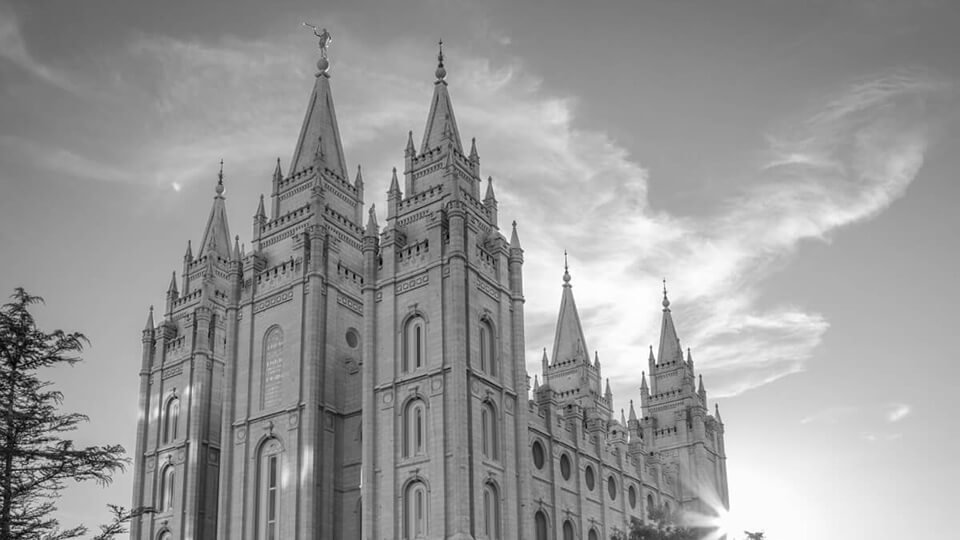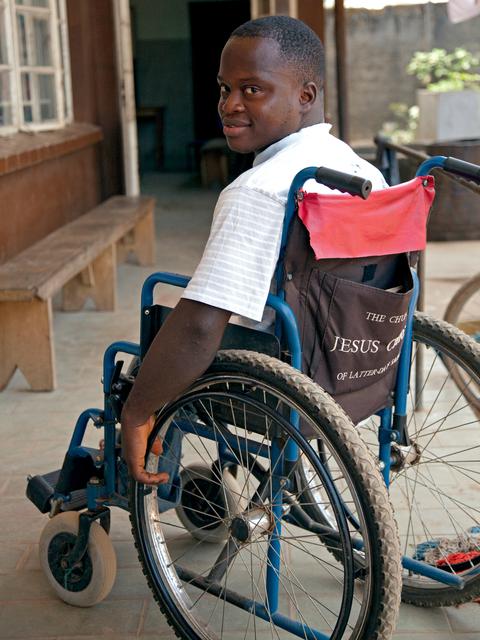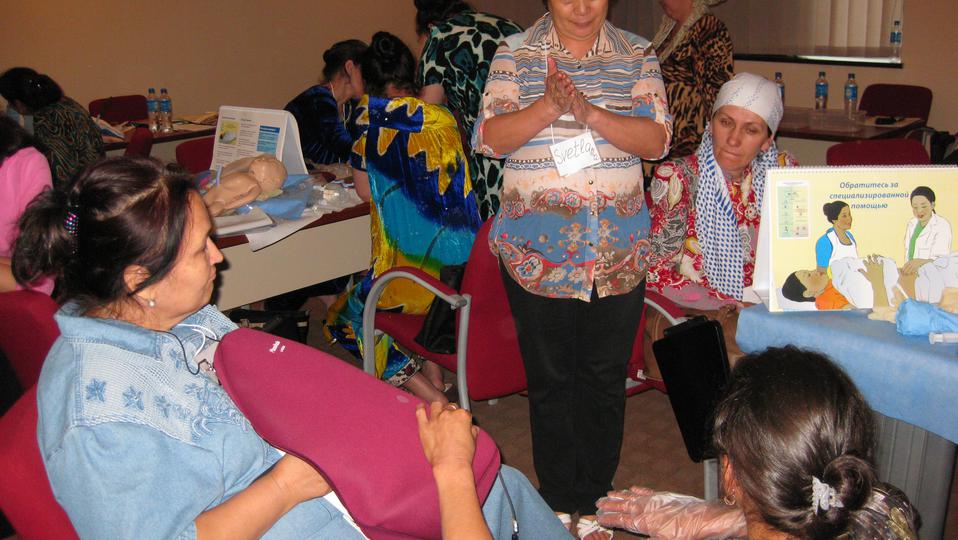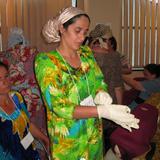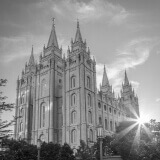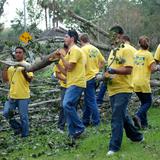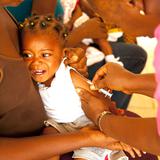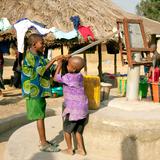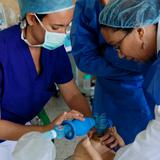Drs. George Bennett and Lyle Archibald, retired physicians who serve with numerous other medical professionals, trek to developing countries several times each year to provide training for local ministers of health and medical personnel. The pair volunteer their time and skills as a part of LDS Charities, the humanitarian arm of The Church of Jesus Christ of Latter-day Saints.
Click here to view and embed videos about LDS Charities' humanitarian programs
Bennett and Archibald are among some 246 dedicated professional volunteers and more than 80 full-time humanitarian services missionaries performing fieldwork throughout the world. As the humanitarian program expanded over the past 30 years, more trained individuals volunteered to help implement eight signature programs under the LDS Charities umbrella.
Such directed worldwide outreach began with a 1985 request from then Church President Spencer W. Kimball (1895–1985) for members in the United States and Canada to hold a special fast in behalf of famine and drought victims in Ethiopia.
It wasn’t the first time Church members helped in international crises: notably, Brigham Young appointed “farmers to the Indians” during the settlement of the Utah territory; Mormon women donated more than 200,000 bushels of wheat to the destitute following World War I; food and medical supplies were widely distributed in war-torn Europe in 1946–47; and members joined with those of other faiths to help following a 1953 Greek earthquake and then provided extensive assistance to refugees following the Vietnam conflict.
The results of the 1985 First Presidency request for donations from the special fast (refraining from food or water for two consecutive meals) far exceeded the expectations of Church leadership. Some $6.4 million dollars was donated to the effort. The Church then partnered with other international aid organizations to deliver relief supplies to the war-torn and drought-stricken country of Ethiopia.
In reviewing these successful organized humanitarian efforts in 1990, President Thomas S. Monson informed Church members, “We have a responsibility to extend help as well as hope to the hungry, the homeless, and to the downtrodden both at home and abroad.”
The humanitarian organization, LDS Charities, focuses on emergency response, an effort to respond to both immediate and long-term needs in natural disasters such as the recent cyclone on the Pacific island of Vanuatu, where emergency supplies were distributed.
For many years medical volunteers have trained colleagues in developing countries on the technique of neonatal resuscitation. Now that program has expanded to include watch care for mothers as well.
In an attempt to increase individual self-reliance, humanitarian volunteers train locals in food production and nutrition.
Another focus emphasizes the diagnosis and treatment of vision problems while providing equipment and supplies for eye examinations and possible surgeries.
In many parts of the world availability of clean water supplies is limited. LDS Charities helps build water and sanitation systems that provide communities with a more convenient and clean water supply.
LDS charities also partners with other aid organizations to implement immunization campaigns to reduce preventable disease.
Last year, for example, nearly 60,000 wheelchairs provided increased mobility to many in need. The final outreach involved a variety of community projects that focus primarily on refugee populations worldwide.
Click here to view, embed and download infographics about LDS Charities' humanitarian programs.
In June 2014, Dr. George Bennett, an anesthesiologist from Ivins, Utah, journeyed to Tajikistan as a medical trainer. Bennett and his wife, Marcia, collaborated with local health officials, physicians, midwives and nurses from across the country to introduce a new technique for maternal health.
The Bennetts, both in their 70s, served for nearly 11 years as volunteers in the international maternal and newborn care program but are now adding a pilot program developed by Jhpiego, an nonprofit health organization affiliated with Johns Hopkins University and the World Health Organization, to their Church charitable efforts. The technique helps resolve postpartum hemorrhage, formerly the leading cause of maternal deaths in Tajikistan; implementation of the technique has already noticeably reduced the number of deaths.
“You note the levels of success in the project when you go in and teach, you donate the necessary equipment, and they sustain the project on their own — they really keep it going.” Marcia Bennett said. “That’s when you know you’ve really made a difference in the health practices of a country.”
On another continent, Dr. Lyle Archibald, a retired oncologist and a six-year LDS Charities volunteer, organized a team to respond to the needs of the only cancer hospital in Paraguay.
| Young man discovers newly found mobility in a donated wheelchair. 2015 Intellectual Reserve, Inc. All rights reserved. | 1 / 9 |
“We sent an investigative team of specialized physicians, one at a time so as not to overwhelm the local medical caregivers,” Archibald explained. “We wanted to assess their needs and develop programs that would assist them in providing best care practices in their country.”
Archibald’s project eventually provided training programs that included suggested surgical techniques and helped locals maximize the efficiency and effectiveness of the equipment they already have.
“We don’t intend to re-create the local infrastructure,” explains Gustavo Estrada, manager of field operations for Church humanitarian services. “Local problems require local solutions and utilize local resources. We partner with organizations that have developed in a local settings so we can achieve the greatest impact on the needs.”
The 1985 localized effort in Ethiopia marked the first time fast offerings were used in behalf of humanitarian aid. (Fast offerings are normally used to support and sustain needy members of the Church in their local communities.) Members continued to respond with voluntary donations and, by 1991, were invited to write in “humanitarian needs” in the “Other” line of the standardized donation form.
In 1996, a singular “Humanitarian” line was added to the donation slip. All humanitarian fund donations, funds given freely from members worldwide, directly support the Church’s efforts to aid the needy of the world regardless of faith, race or circumstance.
Additional overhead for donated supplies, training and shipping is absorbed by the Church so the donated funds directly impact needy individuals. Church humanitarian leaders also partner with other health, aid and nongovernmental organizations (NGOs) to maximize their field efforts.
Marking the 30 years since the initial request for voluntarily donated funds, the humanitarian outreach of the Church now stretches far beyond the boundaries of its own membership and reaches hundreds of thousands of individuals, particularly in third world or underdeveloped lands. In 2014, for example, assistance reached 131 countries and impacted nearly 1.2 million individuals.
“Such charity is more than aid,” explains Sharon Eubank, managing director of LDS Charities. “When implemented under the right principles it emphasizes dignity, human worth, cooperation, unity, sacrifice and assurance that no one is too poor or too disabled or too marginalized to contribute something of value.”
Visit MormonNewsroom.org to view LDS Charities videos and infographics.
